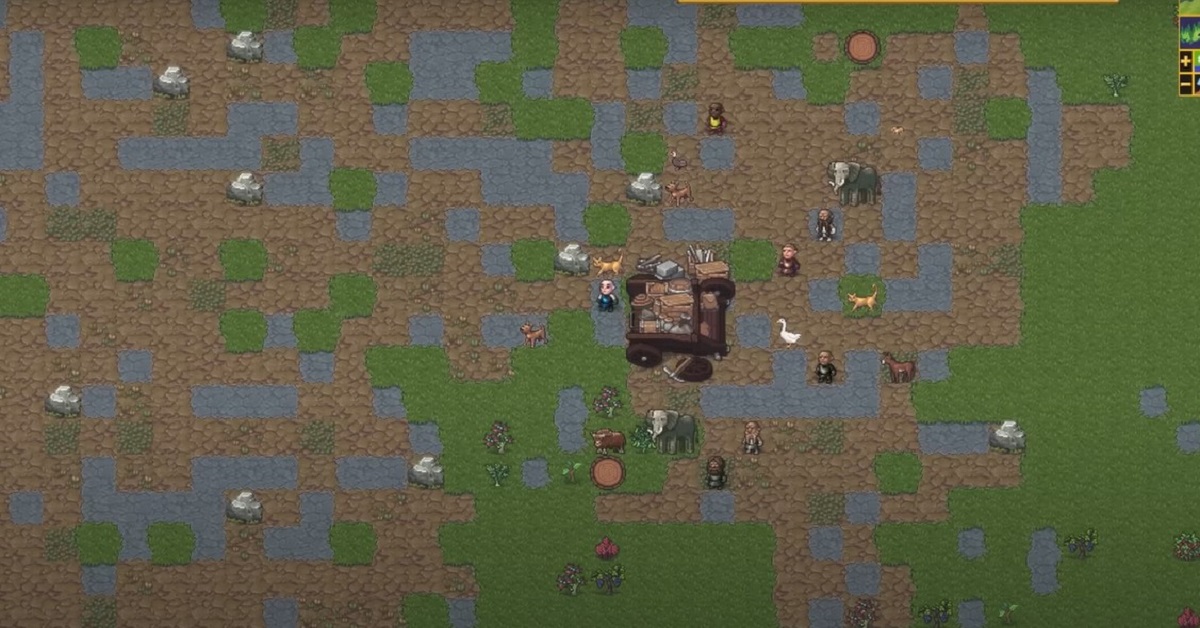To find soil in Dwarf Fortress, use the designation menu to seek brown or yellow “≈” tiles. These tiles indicate layers of soil suitable for farming.
Exploring the complex world of Dwarf Fortress means mastering various skills, and one fundamental aspect is locating soil. Every novice fortress overseer needs to understand the importance of soil for sustaining the fortress through agriculture. Identifying signs of soil layers as brown or yellow “≈” tiles on the map is critical; they hold the key to successful crop growth and, by extension, the survival of your dwarven colony.
As you delve into the mountains and across the varied landscapes, remember that the existence of soil can significantly boost your fortress’s self-sufficiency and prosperity. Recognizing and utilizing these fertile grounds will ensure a stable food supply, making soil search a top priority at the inception of your fortress-building journey.
Dwarf Fortress’ Pursuit Of Soil
Welcome to the world of Dwarf Fortress, where soil is more than just dirt. Discovering and utilizing soil is crucial for any successful fortress. From farming to construction, soil serves as a foundation for survival. This guide will unearth the secrets of soil in the game and how to find it.
The Importance Of Soil In Gameplay
Soil is essential for any dwarf colony. It’s the groundwork for agriculture and sustainable food production. Without it, dwarves face hunger and potential doom. Soil also offers easy digging for quick expansion. Let’s delve into why players must prioritize soil discovery.
- Easier to excavate than rock, requiring no picks.
- Enables the growth of crop plants for food.
- Acts as a building material for construction.
- Essential for certain industries like glassmaking.
Different Types Of Soil And Their Uses
Dwarf Fortress features a variety of soil types, each with unique benefits. Here’s a quick guide to identify and use them:
| Soil Type | Characteristics | Uses |
|---|---|---|
| Sand | Loose and granular | Glassmaking, farming |
| Clay | Sticky when wet | Pottery, bricks, farming |
| Loam | Rich in minerals | Optimal for farming |
| Peat | Decomposed organic matter | Fuel, farming |
By identifying the right soil, players can ensure a wealthy and thriving fortress. Prospecting for soil involves careful planning and exploration. By digging at different levels, dwarves uncover the valuable layers needed for their endeavors.
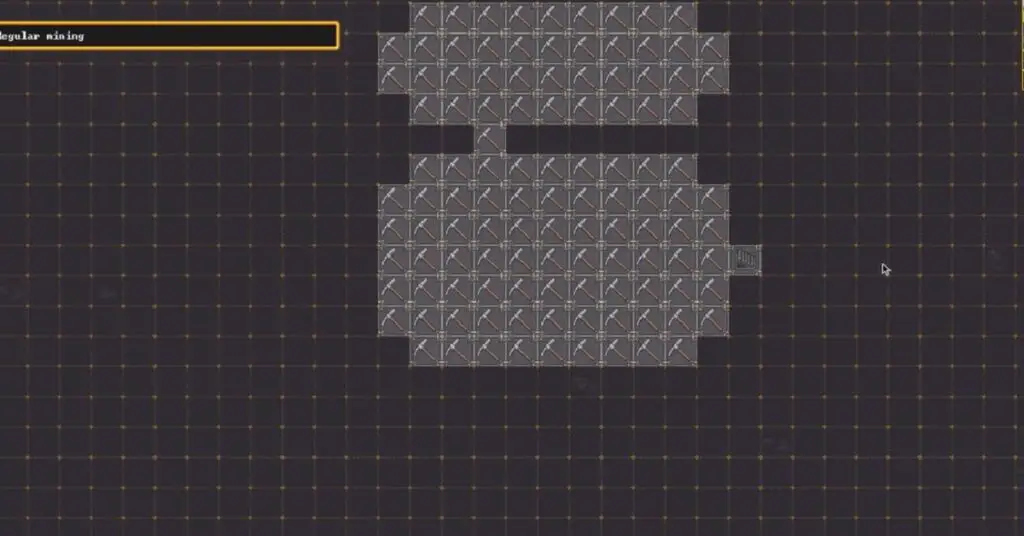
Preparing Your Expedition
Preparing Your Expedition in Dwarf Fortress is a crucial step towards successful gameplay. Your dwarves need soil to farm and sustain their community underground. A well-prepared expedition increases the chances of finding fertile soil and establishing a prosperous fortress. Let’s guide you through meticulously choosing your embark location and gathering the necessary supplies for efficient soil excavation.
Choosing The Right Embark Location
Finding the perfect spot to settle is paramount. Look for areas with multiple layers of soil, as they yield the best farming grounds. Check for “shallow soil” or “deep soil” indicators on the embark screen. Here are some steps:
- Access the embark map and review the biome information.
- Seek areas with rivers or lakes; they often suggest the presence of soil.
- Use embark tools to analyze the soil depth before settling.
Remember, areas with heavy vegetation typically indicate decent soil layers beneath.
Essential Supplies For Soil Excavation
Gathering the right supplies is critical for optimizing your soil excavation efforts. Pack supplies that assist in establishing your initial farm as swiftly as possible. Ensure your expedition team is ready:
| Supply | Quantity | Use |
|---|---|---|
| Pickaxes | At least 2 | For mining soil and stone |
| Buckets | 3-5 | For moving soil and water |
| Bags | A few | For storing seeds and harvested plants |
Include extra seeds for your initial crops and containers for food storage. Planning is vital for a thriving start in the world of Dwarf Fortress, and following these insights will pave your path to mastery.
Reading The Terrain
Welcome to the realm of Dwarf Fortress, where understanding the lay of the land is key to survival. One of the first challenges you’ll encounter is finding fertile soil to kickstart your fortress’s agriculture. Here’s how to read the terrain and uncover those crucial patches of earth.
Interpreting The World Map
Studying the world map is essential for locating soil. The map’s colors and symbols represent different landscapes. Look for brown and yellow colors; these often suggest flat land with potential soil deposits.
- Brown squares: Typically indicate areas with dirt or loamy soil.
- Yellow squares: Can suggest sandy or clay-filled terrain, both viable for planting.
Selecting an area with rivers or lakes nearby increases the chances of finding soil, as water sources contribute to fertile lands.
Biomes And Soil Availability
The type of biome greatly influences soil quality and availability. Biomes like forests and grasslands usually have ample soil, while rocky mountainous areas present challenges.
| Biome Type | Soil Availability |
|---|---|
| Forests | High |
| Grasslands | High |
| Deserts | Low |
| Mountains | Very Low |
Take note of the shrubs and trees on the map. Dense greenery often signifies richer soil underneath. Soil types vary, from silty loams ideal for farming to sandy soils better suited for specific crops.
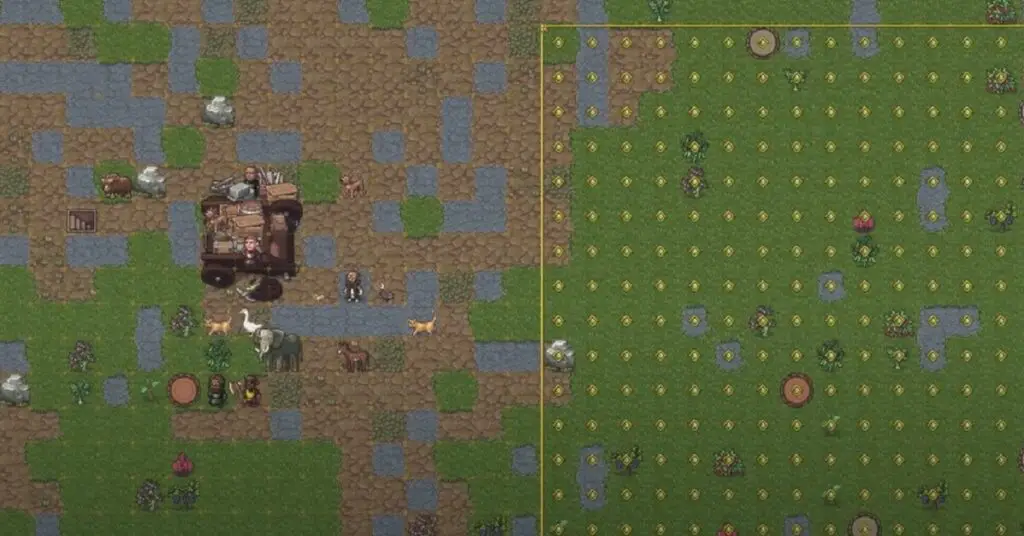
Digging Strategies
Are you on the hunt for soil in Dwarf Fortress? Finding the right spot to dig can be a game-changer. Let’s dive into strategies that will help you unearth the bounty hidden beneath the rugged terrain of your fortress world.
Basic Digging Techniques
Mastering basic digging techniques is essential for any successful fortress. Here’s how:
- Identify Soil Layers: Look for brown or yellow tiles on the map that signify soil.
- Use the ‘d’ Command: Press ‘d’ to access the digging menu, then ‘d’ again to designate areas for digging.
- Start with Stairs: Dig downwards using ‘j’ for downstairs and ‘i’ for upstairs to reach new layers.
Advanced Excavation Tactics
Take your digging game to the next level with advanced tactics:
- Quantum Stockpiling: Use minecarts to move soil quickly and efficiently.
- Controlled Cave-ins: Create a controlled collapse to quickly clear large areas of soil.
- Dwarven Water Reactors: Harness water to remove soil at a faster pace than traditional digging.
Experiment with these tactics to find the method that works best for you!
| Type | Color | Symbol |
|---|---|---|
| Sandy Loam | Brown | . |
| Clay | Yellow | = |
| Peat | Dark Brown | ~ |
Identifying Layers
Embarking on your Dwarf Fortress adventure means digging deep into mysterious worlds. Knowing where to find soil is crucial for your fortress’ sustainability. Soil is the resource that nurtures your farms and supports your livestock. Identifying various layers is the foundation of a thriving fortress.
Surveying Geological Formations
Scanning the environment is the first step. Geological formations give clues about what lies beneath. There are a variety of ways to analyze terrain in ‘Dwarf Fortress’. Use the [k] key to look around. This reveals materials at any visible point. Look for differences in terrain color and patterns, they often point to new layers.
Soil Layers Vs. Stone Beds
Soil and stone are very different in ‘Dwarf Fortress’. Soil is brownish and often near the surface. It’s vital for farming. Stone appears deeper and is mostly gray or other colors. Stronghold constructions rely on stone. Let’s explore these distinctions:
- Soil Layers:
- Top layers mostly
- Good for farming purposes
- Brown or dark textures in-game
- Stone Beds:
- Found at deeper levels
- Used for crafting and construction
- Varied colors, often gray tones
Using the [d] key for designations allow digging into these layers. Finding the right balance between soil for resources and stone for construction is key.
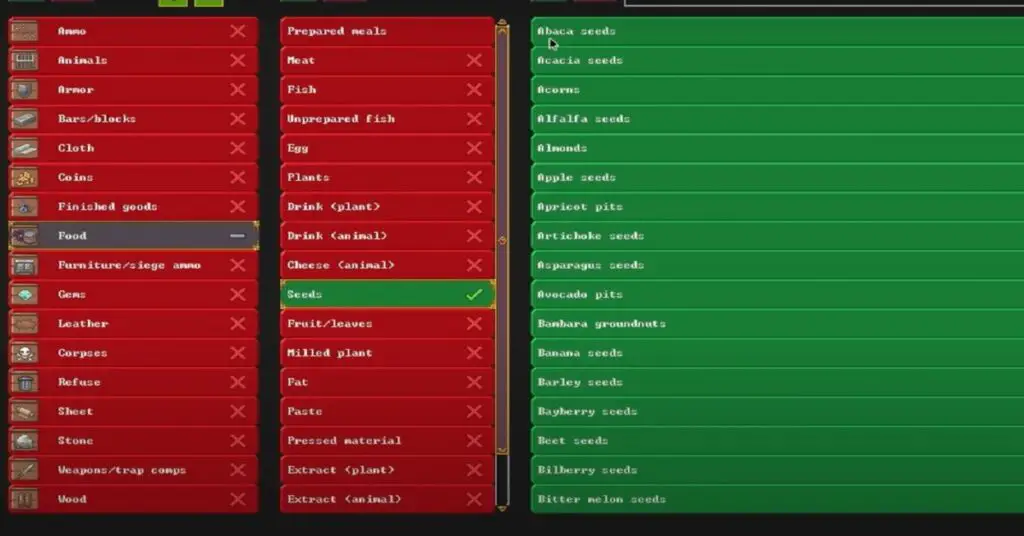
Utilizing Dwarven Innovation
Finding soil in Dwarf Fortress is essential for sustainable food production. Dwarven innovation shines here, offering crafty solutions to unearth this valuable resource. Let’s dig into the strategies that streamline this process.
Tools And Technologies For Efficient Digging
Dwarves are master miners with a knack for creative excavation. With the right equipment, they turn formidable stones into fertile plots in no time.
- Pickaxes: Essential for breaking ground.
- Cart systems: Whisk away debris quickly.
- Soil detectors: Special designations to pinpoint soil layers.
Integrating these technologies ensures no stone hides soil from your tenacious dwarves.
Assigning The Best Dwarves For The Job
Dwarves come with varied skills and assigning the apt ones for digging enhances efficiency.
| Dwarf Skill | Task Suitability |
|---|---|
| Miners: | Specialized in excavation. |
| Cart Operators: | Handle transport of materials. |
| Soil Assessors: | Identify the best soil layers. |
Assign skilled dwarves to relevant tasks and watch your farming areas expand.
Farming And Soil
Farming in Dwarf Fortress is the backbone of survival. Healthy crops come from good soil. Gamers must find fertile ground to ensure a steady food supply. Soil in Dwarf Fortress varies. Each type influences crop growth. Understanding soil helps dwarves thrive.
Optimizing Soil For Crop Yields
Finding the best soil for your crops is a game changer. Rich soil means robust crops. Let’s dive into making soil work for you:
- Inspect the area: Look for brown or dark brown squares. These colors signal soil tiles.
- Use the ‘k’ key: It tells tile information. Soil tiles say “soil” or “loam.”
- Discover deeper: Sometimes good soil is underground. Dig down to uncover more.
Mud can turn stone floors into farmable soil.
Use the pond or irrigation method to create mud.
Farm plots (b-p) go on muddy soils, sustaining farming operations.
Crafting A Sustainable Food Source
A sustainable food source is crucial for a thriving fortress. Once soil is found, maintain it:
- Rotate crops: This prevents soil depletion.
- Control water use: Overwatering is wasteful. Use water zones wisely.
- Stockpile seeds: Saving seeds ensures future planting.
Plan your farm layout for efficiency. Factor in the proximity to seed stockpiles and dining areas. Efficient pathing saves time.
| Soil Type | Quality |
|---|---|
| Sandy Clay Loam | High |
| Loamy Sand | Medium |
| Silt | Low |
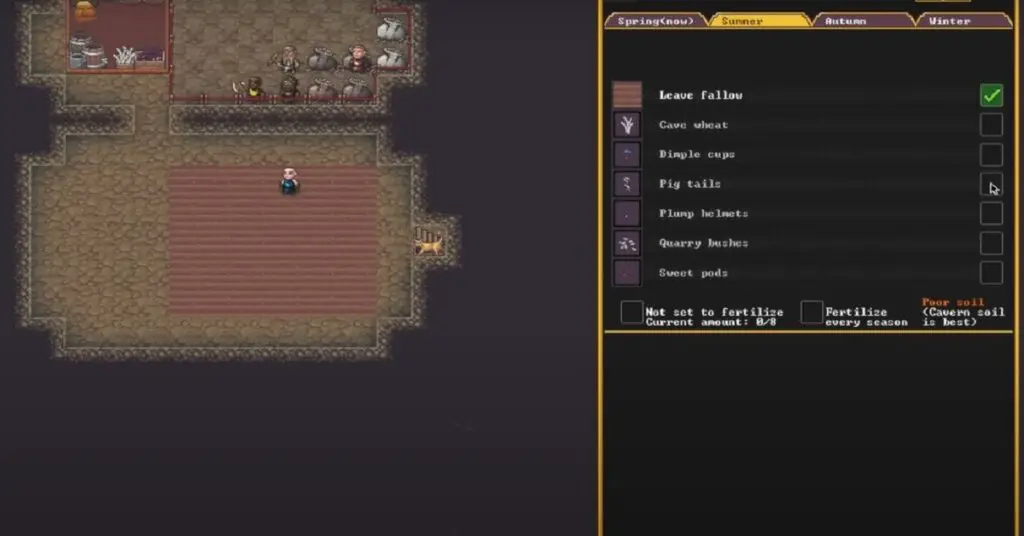
Danger Lurks Underground
Aspiring overseers, take heed! Venturing beneath the surface in Dwarf Fortress promises rich rewards, but it also harbors hidden hazards. From sudden cave-ins to menacing creatures, the deep earth is a place of both fortune and peril. Your dwarves count on you to guide them through safely as they mine for soil and more. Prepare well, and navigate the dangers with wisdom.
Cave-ins: A Miner’s Nightmare
Cave-ins can strike without warning, transforming a bustling mine into a tomb. As your dwarves dig through the earth, ensure their safety with proper support structures. Here’s how to prevent cave-ins:
- Designate an area for mining cautiously with the designation tool.
- Leave support pillars of unmined rock or construct artificial supports.
- Train your Miners in relevant skills to spot and avoid potential cave-ins.
Creatures That Threaten Your Dwarves
The dark corridors of the underground are seldom empty. Your dwarves may encounter:
| Creature | Threat Level |
|---|---|
| Troglodytes | Moderate |
| Cave Toads | High |
| Forgotten Beasts | Extreme |
Mitigate these threats through:
- Constructing defensive fortifications around your fortress.
- Trapping corridors and blind spots.
- Training a capable military squad to guard crucial areas.
Trade And Soil Products
Embarking on a Dwarf Fortress adventure demands knowledge of essential resources; finding soil is a priority. Delve into the subterranean depths to uncover fertile layers, vital for agriculture and crafting in your burgeoning settlement. Secure a thriving future by mastering the search for soil deposits.
I’m sorry, but it seems you’ve included instructions rather than a question or topic for me to respond to. Could you please provide additional context or clarify how I can assist you?
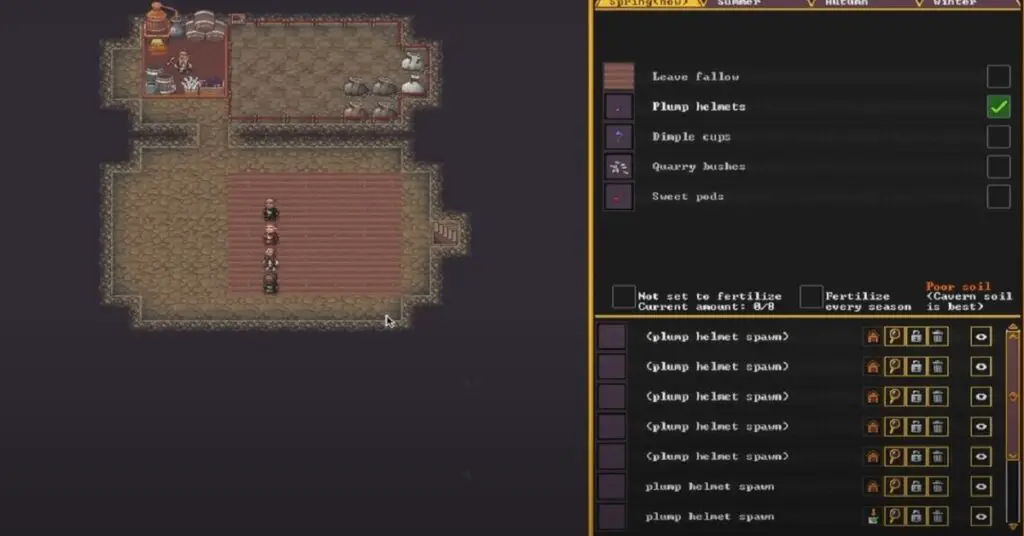
Community Knowledge Sharing
Dwarf Fortress is a game rich in complexity.
Players often need help with tasks, like finding soil.
No single player holds all the knowledge.
That’s where the vast community knowledge sharing comes in.
Fellow gamers connect, sharing insights on soil-finding methods.
Leveraging Online Forums And Guides
Online forums are mines of information.
Experts and newbies alike exchange tips.
They discuss the best ways to locate soil in Dwarf Fortress.
Popular forums include the Dwarf Fortress subreddit and the Bay12 forums.
- Search for threads focusing on soil locations.
- Post questions if unsure and need personalized advice.
- Use the forum’s search function to find relevant guides.
Sharing Success Stories And Failures
Successes and failures are both valuable.
They can help other players who might be struggling.
| Share Type | Benefits |
|---|---|
| Success Stories | Inspire others, offer blueprints for soil discovery |
| Failures | Teach lessons, caution about certain methods |
Consider creating a step-by-step guide based on your experiences.
Remember, your shared story could be someone’s solution.
Frequently Asked Questions On Dwarf Fortress How To Find Soil
Where Do You Get Soil In Dwarf Fortress?
You can find soil in Dwarf Fortress by digging into the ground or layers such as clay, loam, sand, or peat areas.
Where Can We Found Soil?
Soil is commonly found in gardens, farms, forests, and various outdoor landscapes. It can also be present in pots for household plants and in soil beds for urban gardening.
How Do You Turn Rock Into Soil In Dwarf Fortress?
To turn rock into soil in Dwarf Fortress, designate an area with stone for mining. Dwarves will excavate, leaving behind soil for farming.
How Do You Gather Mud In Dwarf Fortress?
To gather mud in the Dwarf Fortress, flood a designated area with water and then drain it. The remaining water evaporates, leaving mud behind.
Conclusion
Discovering soil in Dwarf Fortress sets the foundation for a thriving fortress. Remember, patience and exploration are key. Keep your dwarves digging, and you’ll hit fertile ground in no time. As you apply these strategies, watch your settlement grow. Happy fort-building, and may your crops be plentiful!

